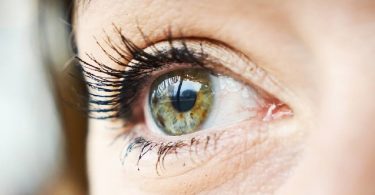Astigmatism is a vision disorder: from far and near, the image represented is distorted. This vision disorder is due to uneven curvature of the cornea so,in this article we will talk about : astigmatism causes, symptoms and treatment.
Contents
Definition
The astigmatism means a defect of vision. The result is a distorted representation of the image from both far and near. The vertical or horizontal lines are more or less clear.
This disease can be accompanied by myopia or hyperopia.
It is one of the visual anomalies caused by refraction disorders (deviation of the light ray when passing through the eye), such as myopia, farsightedness and presbyopia.
A priori, there is no risk factor for this disease in children of astigmatic parents. This theory is still controversial.
Astigmatism causes
This disease is due to corneal curvature inequalities (transparent part that covers the eye). A non-spherical curvature (the cornea then has a rather oval shape) results in poor focusing of the image on the retina.
This disease can be congenital (present at birth):
- When the cornea is smooth, astigmatism is regular.
- When the cornea is deformed by a wound or a disease of the cornea, the astigmatism is irregular.
- Age can show regular astigmatism.
Astigmatism symptoms
The mild astigmatism may be well supported in a young person, cause no symptoms. Initially, the eye can compensate for the vision deficit by various means.
The symptoms are:
- eye strain;
- frequent squinting of the eyes;
- headaches;
- glare in the light;
- double vision, blurry, imprecise from far and near;
- dizziness ;
- slanted writing (especially in children);
- a confusion of similar characters such as H, M and N, or even 8 and 0.
In children, uncorrected astigmatism may be a risk factor for squinting (squinting eye).
If this disease affects only one eye, the appearance of amblyopia (more or less significant decrease in vision of one eye which may be permanent) is possible. Prompt management is necessary to avoid severe vision loss.
It is advisable to consult an ophthalmologist regardless of vision problems .
Prevention councils
In order to prevent the occurrence of this disease , it may be useful to:
- carry out screening tests regularly in children (often at school);
- carry out an ophthalmological consultation at the slightest doubt of visual disturbances, in adults and children, in order to avoid aggravation.
Exams
A consultation with an ophthalmologist is essential in order to assess the importance of astigmatism. We can do this by various devices .
Astigmatism treatment
A very mild astigmatism is present in many individuals. Generally, we can support it well and does not require correction:
- We can correct this disease by glasses with cylindrical (or toric) lenses. The glasses do not have the same power for the different meridians and allow the image to be correctly transferred to the retina.
- We can use Soft toric or rigid contact lenses. But we should be carrefull when handling them (risk of infection).
- Laser surgery (called refractive) gives good results. We can practise it under certain conditions: growth finished, absence of degenerative corneal disease…
- The correction of irregular astigmatisms (a lesion is present on the cornea) is more difficult.
Regular monitoring of the ophthalmologist at least once a year is necessary for anyone with astigma .
Read also:
Panic attack: causes, symptoms and treatment
How to protect from colds, flu and gastroenteriti
Asthma: causes, symptoms and treatment
Ascites: causes, symptoms and treatment
Asbestosis: causes, symptoms and treatment
Osteoarthritis: causes, symptoms and treatment






























